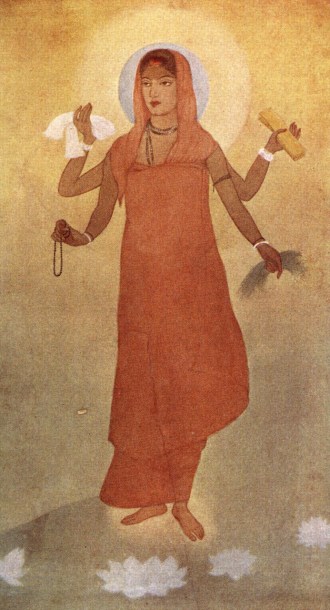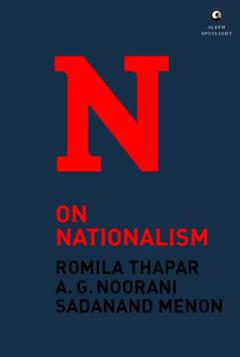Cultural Nationalism is Nothing but Rogue Nationalism pitting ‘Us’ against the "Other"
Sadanand Menon de-constructs cultural nationalism, majoritarian and exclusivist
What is visible today is a new hatred for the idea of democracy as we know it and for the rights as guaranteed in the Constitution. This is quite in keeping with the agenda of cultural nationalism, which strives-through generating a climate of intolerance and intimidation-to keep civil society in a state of constant agitation by subjecting it to constant attack.
--Sadanand Menon
Cultural nationalism, by any definition, is a rogue version of nationalism which is already present in concepts of the nation state. Its cunning agenda is to evacuate all ideas of political rights from the idea of a nation state and transplant in its place ideas of cultural rights, obviously weighted in favour of concepts of primogeniture, racial purity and genetic ancestry as contained in ideas like janmabhumi or birthland/homeland and other emotive aspects that touch upon shared language, food and consanguinity. It is a highly charged area of irrational self-beliefs that give little credence to claims of history or any other kind of scientific research. It is an imaginary homeland constructed out of imaginary enemies, who always belong to religions and regions not (you believe, are) your own. It is a strange, anxious individual who will not pay the slightest heed to one’s own proven hybridity. In history, nothing stays ‘pure’. Or, as Salman Rushdie would have it, it’s all subject to ‘mongrelization’.
“…In the Indian context, the RSS’s effort has been to construct a ‘national identity’ which is anterior to an elides over the colonial as well Islamic periods of recent times to reach out to an ‘authentic’ India of the hoary past, which remains emblematic of its ‘real’ culture – unique, untrammeled and unadulterated by colonial or Islamic hybridity. In the past, this version found favour with the reigning tenets of Orientalist thought which divided the world into neat, essentialized compartments of the ‘East’ and the ‘West’. The East was, then, nothing but ‘spiritual’. Partha Chatterjee, in Nationalist Thought and the Colonial World: A Derivative Discourse, has clearly argued how these tropes play out, sometimes straight and sometimes inverting their own claims.
“..A constant character of the manufacture of cultural nationalism, therefore, is the constant and nagging ‘unhappiness’ over the narratives of the past which digress from specious claims of purity, undifferentiated unity and political power. Every attempt then is to exhibit unbridled triumphalism over its own antiquity and past glories that anticipate similar fortunes in the future.
“..Soon after the NDA came to power in 1998 under Aral Bihari Vajpayee, an extraordinary event happened at the National Museum, Delhi. The Harappan Gallery in the museum was quickly ‘renovated’. As you entered that section, space had been created on the left wall of the gallery to inscribe a ‘civilizational timeline’. So there were Sumerian and Assyrian and Babylonian and Egyptian civilizations, all indicated through coloured bands of varying lengths as per their historic antiquity – from 1200 BCE to 2500 BCE. There were about ten or twelve bands in different colours and of diverse lengths. The Chinese civilization, which originated in 3200 BCE, was indicated by a long red band which went halfway across the wall. Above this was a saffron band proudly proclaiming ‘Indian Civilization 7000 BCE’, which went all the way across the wall, dwarfing every other band. The figure, which is a figment of the imagination, has been floating around in the Indian national consciousness since the time Bal Gangadhar Tilak, in his essay ‘The Arctic Home in the Vedas’, had somehow configured the Vedic period to be of around that antiquity. Sometimes these inflated figures were useful during the anti-colonial movement to mobilize nationalist opinion and to thumb your nose at the colonialist. However, post-Independence, even as these figures and strategies get contested through more rigorous research, they do get commandeered for purposes that aid in creating a majoritarian version of historic exceptionalism.”
“…Ideas of cultural nationalism emerged hand in hand with late nineteenth-century ideas of nationhood itself. Nationalist leaders like Tilak worked on constructing the idea of a glorious and ancient Indian past, heavily inflected with Hindu symbology, as a strategy to fight the imperialist. This was one of the ways in which the national movement hoped to forge a common Indian identity based on a glorious past (composed in equal parts of myth, legend and select incorporations of historical facts). The idea of the past that the national struggle sought to create in its early days was one of a pre-historic India of mythic origins that was divine, pure, monolithic and untainted by any polluting ‘external’ influence.
“..This itself was a myth, for the subcontinent has been host to an unending procession of cultures and claimants who have tromped through it over at least three millennia. Yet the attempt was to make culture the sole base for the formation of the independent nation. Inevitably, because of the majoritarian Hindu population and the national leadership that represented them, this notion of the past that was more or less upper caste and Hindu became conflated and interchangeable movement. In some cases, this was deliberate, in others it was inadvertent. The prototype of how cultural nationalism came to be constructed here can be divided into a few distinct phases.
“..The first phase is what would be best described as incipient nationalism. It begins with the early impulse to shape the country’s cultural identity by reforming Hinduism itself. English educated, upper-class/caste Indians of the period begin to take to heart the critique as well as construction of Hindu society by ‘well-meaning’ Western scholars. Customs considered ‘barbaric’ like child marriages, the practice of sati, the isolation of widows, the dedication of women to temples as ‘devadasis’, caste discrimination are all seen as retrograde and deplorable. Reformists like Raja Ram Mohan Roy emerge in the early part of the nineteenth century to campaign actively against such ‘evils’ and set the house in order.
“…The setting up of the Brahmo Samaj is clearly an early step in articulating a self-conscious new nationalism. It gets further articulated by more aggressive reformers later in the century like Ishwar Chandra Vidyasagar and Jyotiba Phule. Swami Dayanand Saraswati sets up the Arya Samaj, which simultaneously calls for reform within the Hindu religion and builds defences against erosion by other religions through elaborate rituals of purity and restitution. The frenzied ‘ghar wapsi’ of today is not all that original an idea. Here the Vedas are considered to be the foundation of Indian nationalism. Hindu tradition is invoked for claiming cultural autonomy, for critiquing certain social practices, as well as for providing cultural foundations for assertive nationalism. Mohinder Singh, in ‘Crisis & Critique: Diagnosis of the Present in Nationalist Discourse in Hindi, 1870-1908’, has made the point that ‘nationalism absorbs traditions superficially; in truth it remains nationalism’s suppressed other’.

Image Courtesy: Wikimedia Commons
“..As A.G. Noorani points out in his essay on the origins of Bharat Mata, a more militant version of nationalism is provided in 1882 by the publication of the novel Anandamath by Bankim Chandra Chatterjee. This was to soon assume the proportion of a manifesto for Hindu nationalism, as Bankim plays with all the tropes of exclusive nationalism – protecting his nation from any external defilement. His idealized nation is Anandamath. The deity he worships is an already militarized, ready-for-battle Krishna who will lead his chosen ones to victory. And, of course, ‘Vande Mataram’ is the battle cry around which he rouses the hordes. It is pertinent here to evoke Sudipta Kaviraj’s masterly study, The Unhappy Consciousness: Bankim Chandra Chattopadhyay and the Formation of Nationalist Discourse in India, where he suggests how Bankim works around the fantasy of war against ‘outsiders’, which included the British and the Muslims. He thus provides a powerful imagery for a future nationalism, which was influential enough to be celebrated in theatre and cinema over the next seventy years. And ‘Vande Mataram’ itself (coupled with ‘Bharat Mata ki Jai’) emerged as the new talisman with which to measure not only one’s patriotism but one’s very nationality. The sheer ecstasy and rapture into which Hindutva hacks went when A.R. Rahman performed in a virtuoso track of ‘Vande Mataram’ nearly a decade ago was never repeated for any of his other works.
“..In 1905, coinciding with the partition of Bengal, Abanindranath Tagore paints an image of ‘Banga Mata’ (Mother Bengal). This was soon to be recast as ‘Bharat Mata’ (Mother India), which marked one of the earliest attempts, building on those by Bankim, to cast the nation in the shape of a benevolent mother. This was still a benign image in the gentle wash style of the Bengal School, where the image is soft and radiant and holds promise of bounty, prosperity and benevolence. Subsequently, as the struggle for independence intensified, so did this image of the benevolent mother become increasingly ferocious, a cross between a Durga and a Kali, riding a tiger and fully armed. Bharat Mata took on a distinctly militant identity that was used to mobilize the Hindu flock, irrespective of political persuasion.
“…It must be said here that ‘Bharat Mata ki Jai’ is not an attribute of patriotism, but of deep patriarchy. Extreme mother-love is a camouflage for extreme misogyny. Over the past few years in India. The nature of the violence inflicted on women during rapes, riots and caste retributions is of an order seldom witnessed before in any part of the world, except perhaps, in Bosnia during the civil war, or in the Congo, or in Sri Lanka during the final moments of the pogrom against the civilian Tamil population there. From the barbarity of the jawans of the Assam Rifles on Manorama Devi, to incessant mass rapes by soldiers in Kashmir, to the graphic and horrific brutalities (that were videotaped) on even pregnant women in Gujarat in 2002, to the Nirbhaya case in Delhi, there is no evidence to prove that devotion towards an abstract ‘Bharat Mata’ translates into even a semblance of affection or respect for real flesh-and-blood women. Indeed, here it is only literally the flesh and blood that seems to matter. Add to this the kind of vile trolling and rank verbal and mental abuse that independent women activists/writers who stand up for rights and against bullying-like, say, Kavita Krishnan, Teesta Setalvad, Arundhati Roy, Shabnam Hashmi, Shehla Rashid, Rana Ayyub and others – are attacked with indicates a level of morbidity and sexual repression that should be unsustainable in a democracy. Cultural nationalism can truly be said to have arrived when this confusion about one’s identity and sexuality produces a permanent pathology of inadequacy, about which Austrian psychoanalyst
Wilhelm Reich has so insightfully written in The Mass Psychology of Fascism (1993). For Reich, cultural nationalism is the basic emotional attitude of the suppressed man. He sees the ‘authoritarian family’ as the base of the middle classes, which is held together with the help of religious fears and rampant mysticism, infused in turn by sexual guilt embedded in their emotions. Religion, thus, leads to negation of sexual desire. Sexual disability results in lowering of self-confidence.
This is often compensated by the ‘brutalization of sexuality’. The good doctor was analysing Germany of the 1930s; he might as well have been putting contemporary India on the couch.
(The author is adjunct faculty, Asian College of Journalism and at IIT, Madras. He is currently managing trustee of the Arts Foundation, SPACES, Chennai; this piece of writing is excerpted from Aleph's just published work, On Nationalism where Menon's essay is titled From National Culture to Cultural Nationalism)



